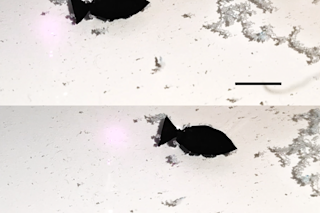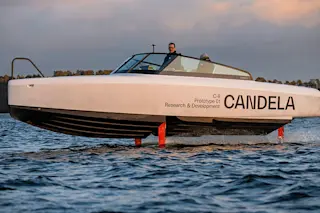Although they provide mobility to thousands of people, conventional prosthetic ankle-foot combinations cannot match the spring in a natural step. But in July, researchers reported the first robotic ankle, which adjusts to the user and the terrain to lend a near-normal walking gait.
Conventional prosthetics are passive, says Hugh Herr, biomechatronicist at the MIT Media Lab. They have built-in springs that allow the ankle to rebound after a step, but with no more energy than the wearer applied to the prosthesis. “But sometimes the human ankle puts out more energy than is mechanically absorbed,” Herr says. Without this extra bounce from the natural ankle, amputees require up to 30 percent more energy to walk and put extra strain on their other leg to compensate, leading to back problems.
Over a three-year period, Herr and his group developed a new robotic system that uses sensors and microprocessors to decide when to feed extra power to the prosthetic joint via an electric actuator. As the wearer walks, the robotic ankle provides a forward boost.
“With this power system, I find I can walk and be very erect and not wobble,” says Herr, a double below-the-knee amputee himself. “You suddenly realize how strenuous walking with a conventional prosthesis is.”
A company called iWalk is doing further pilot studies and fine-tuning the system for commercialization, making it smaller, lighter, quieter, and easier to use.
Go to the next story: 49. Chilies Domesticated 6,000 Years Ago in theAmericas














